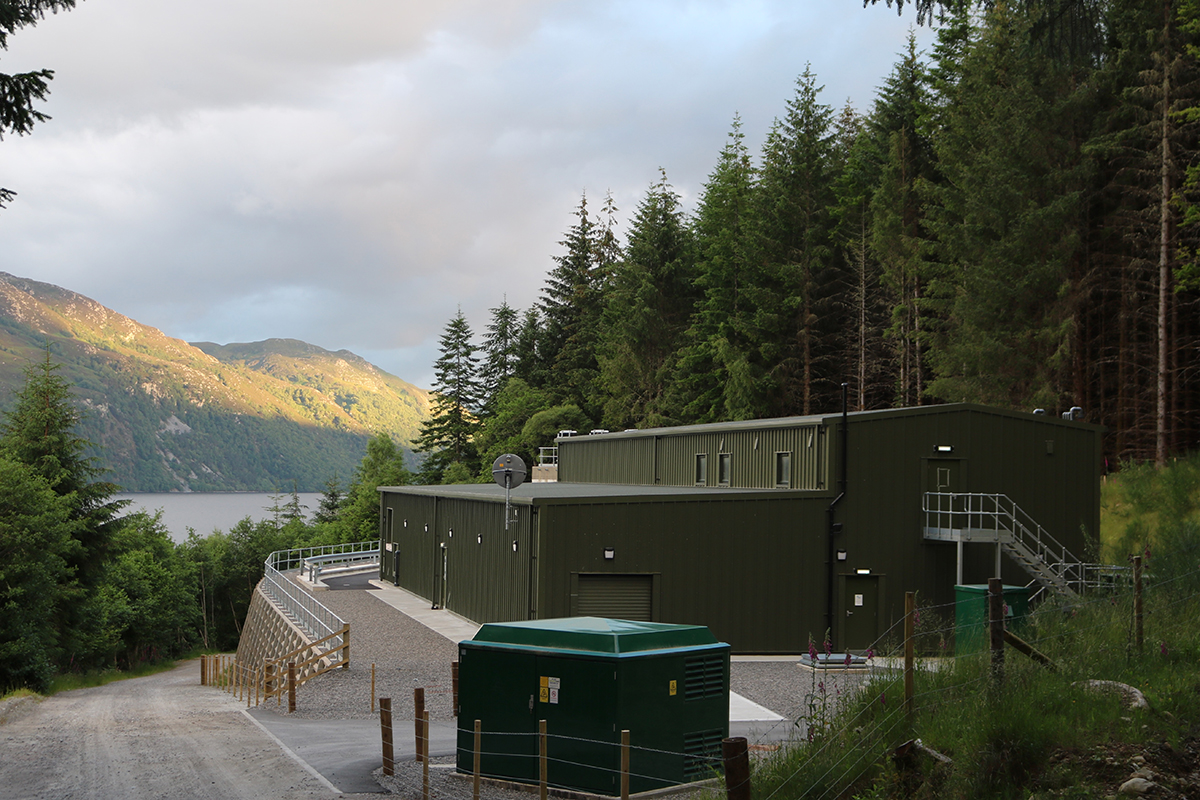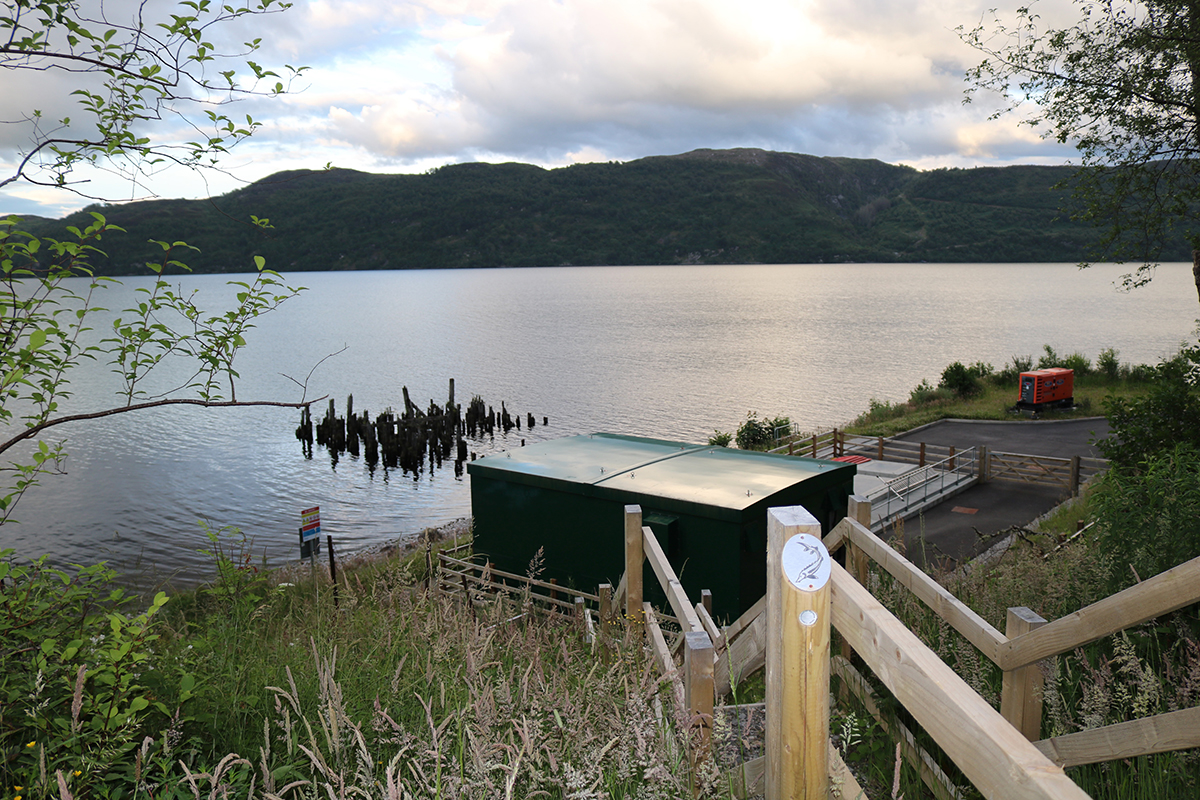
A new water treatment plant and distribution network will come into operation in the Loch Ness region this month following a four-year project.
Since the project began in 2018, it is said to have ‘stretched the problem-solving abilities of its engineers’ and won several industry awards for the solutions forged during its construction.
The project was led by ESD Joint Venture, which brings together Galliford Try, MWH Treatment and Binnies, on behalf of client Scottish Water. The objective was to secure the long-term supply of ‘clear, fresh and great-tasting’ drinking water to the communities of Fort Augustus and Glenmoriston, with capacity to meet peaks in demand during the tourist season.
ESD said the project involved some ‘unique’ engineering challenges. In constructing a new treatment works, a new intake system had to be created from Loch Ness as well as a distribution system to connect two previously separate water supply areas. This includes creation of two service reservoirs – one on high ground north of Fort Augustus; and one which re-uses part of Invermoriston’s previous Water Treatment Works.
The route of the connecting pipework had to follow a 10km section of the Great Glen Way. This was described as the only viable option on the steep slopes above Loch Ness, avoiding major disruption to the A82 trunk road or to woodland habitat.

Within Fort Augustus, a new water main crossing had to be achieved beneath the River Oich and the 200-year-old Caledonian Canal. This work had to navigate ‘unique’ topography and ground conditions, ESD added, while safeguarding the structure of the canal and the local environment.
Two complications arose during the underwater phases of work. The new intake system required the installation of a 75m pipeline on the floor of Loch Ness, within the ‘dramatic landscape and distinctive ecology’ created by the Great Glen Fault.
To avoid using concrete, a novel approach for anchoring the pipe in place was developed instead, using mesh bags filled with rocks as the main structure to secure the water intake. ESD explained that disruption to the loch was further minimised by assembling the pipes on land and then floating them into place using a ballast and concrete collars for positioning.
A silt curtain technology was also deployed to protect the underwater environment by containing turbidity during the construction process. The team won a Silver Scottish Green Apple Award in 2020 as well as an international Green Apple Award for its environmental management.
Another task was to use horizontal directional drilling and pipe borings for the 350 metres of distribution pipes that would run under the River Oich and the Caledonian Canal. Soon after drilling began, ESD said engineers noticed a loss of drilling fluid, indicating the drill had encountered voids in the rubble used by the canal’s 19th century builders.
An alternative solution was developed utilising a hammer-driven auger bore technology sourced by Nicol of Skene from Finnish company Geonex. The solution is said to have offered ‘enhanced’ ability to deal with variations in ground conditions, suitability for crossing beneath water courses, and speed of set up. This was the first time this approach had been used on a Scottish engineering project and the crossing length exceeded the normal limit for the technology.
Working to restricted windows around the tourist season and salmon migration cycle, the team had to find operational efficiencies as the project progressed. One approach was to shift assembly of the treatment plant offsite to sub-contractor RSE’s factory in Muir of Ord, where the 12 modules for the building were designed, fabricated, assembled, tested and pre-commissioned. ESD revealed that only 15% of the total project hours were spent onsite.
The new water treatment works, which has just gone into supply, use nano-filtration membrane technology – described as a process ideally suited to the removal of organic matter that uses fewer chemicals, and generally has a lower carbon footprint.
Wendy Cooper, chief operating officer, ESD, said, “The Loch Ness project has encountered many challenges along the way, but the team has managed to achieve excellence in delivery – and in a way that is sustainable and sensitive to the outstanding natural landscape and the local communities. This is all down to the combined efforts of the Scottish Water team, ESD, key supplier RSE, and local supply chain companies, including many from the Highland region.”
Mark Dickson, director of capital investment, Scottish Water, added, “A mix of new technologies, digital approaches and ingenuity have driven this project and enabled it to overcome some significant challenges. By working closely with the Highland Council, local businesses and communities, we hope that we have left a positive legacy, both in terms of what has been built and the way it has been achieved. Most importantly, we have enabled customers to be supplied with clear, fresh and great-tasting drinking water on a sustainable basis for decades to come.”










